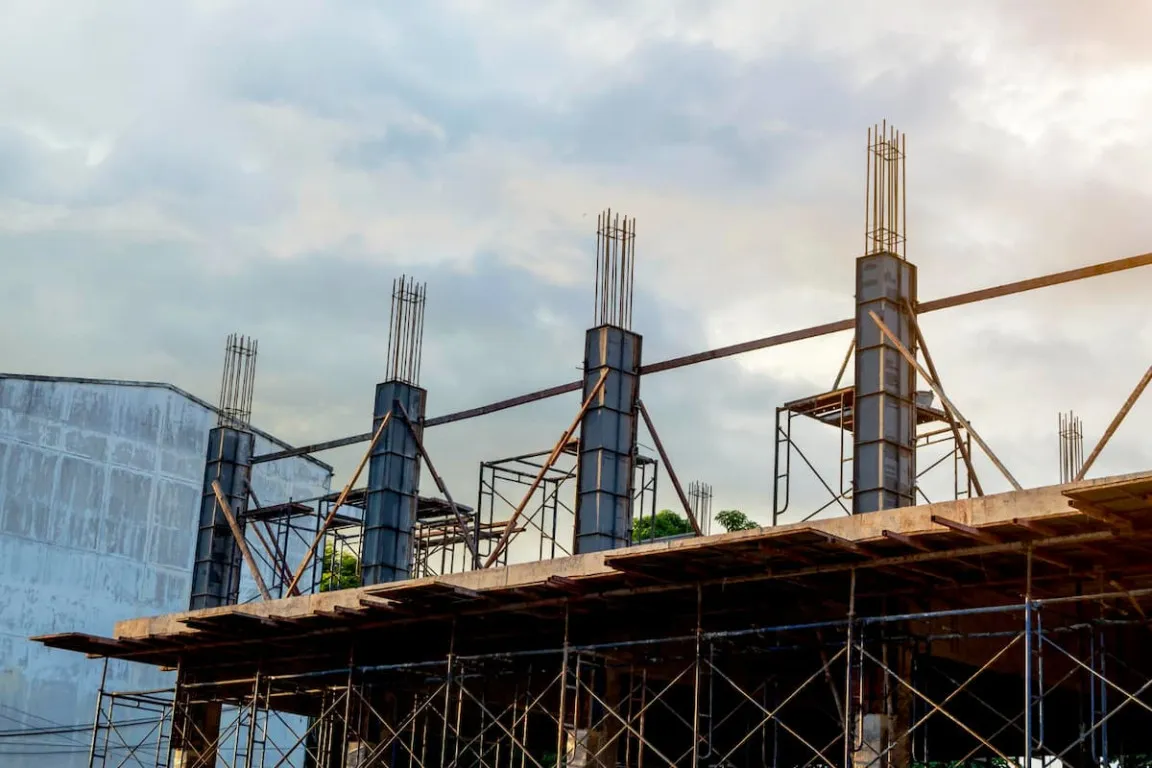Columns are the main structural elements that bear the vertical load from above, so their role is crucial to the strength of the building structure. To create an ideal column structure, not only must the quality of the material be guaranteed, but the way to calculate the column rebar requirements must also be correct.
The calculation of column rebar requirements must be done accurately. This can prevent material waste, increase project efficiency, and make buildings more aligned with construction standards. So, let's find out how to calculate column rebar requirements in the description below.
Basic Things in Calculating Column Rebar Requirements
To understand how to calculate column rebar requirements, there are some basic things that you must determine, including:
- Type of Rebar: The choice of rebar type depends on the construction needs or location of use. For example, plain rebar is commonly used for stirrups, and threaded rebar is commonly used for main reinforcement, such as beams, columns, slabs, and foundations.
- Rebar Size: Includes diameter, standard bar length, and weight per meter. The size of the rebar will directly affect the bearing capacity of the structure and the calculation of total requirements.
- Rebar Quantity: Referring to the calculation of the cross-sectional area, length, and weight of the rebar, you can determine the total amount of rebar required. This calculation must be done accurately to prevent a shortage of materials that leads to an unsafe structure or an excess of materials that causes cost overruns.
Read also: The Right Concrete Mix Ratio According to SNI Standards
How to Calculate Rebar Requirements for Columns and Beams
To apply the correct calculation of rebar requirements for columns and beams, you need information about the column height, stirrup spacing, number of main reinforcements, and side length of stirrups.
For example, to make a concrete column 4.5 m high and 25 x 25 cm in circumference, you will need a diameter 10 (d10) rebar as the main reinforcement and a diameter 8 (d8) as the stirrups. The stirrups are spaced 18 cm or 0.18 m apart. Based on these requirements, the following is an example of the calculation of column and beam rebar requirements:
- Column rebar height = 4.5 m.
- Spacing of stirrups = 0.18 m.
- Number of main reinforcements = 4.
- Weight of plain rebar according to SNI = 0.62 kg/m.
- Length of 1 standard rebar bar = 12 m.
- Side of stirrup = 25 cm - 2 cm - 2 cm = 21 cm.
- Additional for the bending part = 6 cm.
1. Calculation of d10 Rebar for Main Reinforcement
Total length of d10 rebar = Height of column steel x Number of main reinforcement
= 4.5 m x 4
= 18 m
Concrete rebar requirement d10 = Total length of concrete rebar d10: Length of 1 rebar
= 18 m: 12 m
= 1.5 (rounded up to 2 bars)
2. Calculation of Concrete Rebar d8 for stirrups
The number of stirrups needed = Column rebar height: Spacing
= 4.5 m: 0.18 m
= 25 pieces of stirrups
Rebar length for one stirrup = Side 1 + Side 2 + Side 3 + Side 2 + Additional bending
= 21 + 21 + 21 + 21 + 6
= 90 cm or 0.9 m
Total amount of concrete rebar d8 = Total number of stirrups x length of rebar for one stirrup
= 25 x 0.9 m
= 22.5 m
Concrete rebar requirement d8 = Total amount of concrete rebar d8: Length of 1 concrete rod
= 22.5 m: 12
= 1.875 bars (rounded to 2 bars)
Based on the above calculations, the results showed that the d10 column rebar requirement was 2 bars, and the d8 column rebar requirement was also 2 bars. To simplify further calculations, you can use the rebar weight guide below.
Rebar Weight Table
|
Size (mm) |
Weight (kg) |
Size (mm) |
Weight (kg) |
|
6 |
0.222 |
8p |
0.4 |
|
8 |
0.395 |
9p |
0.5 |
|
9 |
0.500 |
10p |
0.62 |
|
10 |
0.617 |
12p |
0.89 |
|
12 |
0.888 |
13p |
1.04 |
|
13 |
1.040 |
16p |
1.57 |
|
16 |
1.578 |
16p |
1.58 |
|
19 |
2.223 |
19p |
2.23 |
|
22 |
2.985 |
22p |
2.98 |
|
25 |
3.853 |
25p |
3.85 |
|
28 |
4.830 |
28p |
4.83 |
|
29 |
5.185 |
29p |
5.19 |
|
32 |
6.313 |
32p |
6.31 |
|
36 |
7.990 |
36p |
7.99 |
|
6p |
0.22 |
||
Read also: Reinforced Concrete: Definition, Uses, Structure, & Benefits
Tips for Choosing Columns and Beams Rebar in Construction Projects
To maximize the use of rebar in columns and beams, make sure you pay attention to the following important tips:
1. Ensure the Quality of Concrete is Guaranteed
The quality of concrete will determine the strength and stability of the building. Therefore, choose concrete that meets the Indonesian National Standard (SNI). Because, with this standard it means the concrete already has the ideal strength and size.
In addition to paying attention to quality, you can also choose the type of precast concrete or ready-mix concrete according to the needs of the construction project.
2. Check the Surface of the Rebar
When buying rebar, do not forget to check the surface to make sure there are no defects, rust, or cracks. This needs to be minimized so that the durability of the material does not decrease. Only choose rebar that has a smooth surface and has no deformation.
3. Utilize Software for Structural Planning
There are several software programs to help with structural planning, including SAP2000, ETABS, and AUTOCAD Structural Detailing. These tips for calculating column and beam rebar requirements will help you do the calculations efficiently.
4. Cooperate with Concrete Rebar Suppliers
In addition to optimizing internal factors or those related to project parties, you can also build cooperation with external parties, one of which is a concrete rebar supplier. This cooperation aims to get you the best deals so that the use of concrete is optimized.
That is the explanation of how to calculate column rebar requirements and some tips that you can apply to optimize the process. Remember, as mentioned earlier, accuracy in calculating construction needs is as important as the quality of the materials used.
In addition to calculating the needs carefully, make sure you choose high-quality products, especially cement, as a material needed in many building applications. The best way to do this is by choosing products from Semen Merah Putih.
One of the superior products from Semen Merah Putih, namely Semen Merah Putih Watershield, is a super premium multipurpose cement product fitted with water repellent technology. With this technology, Semen Merah Putih Watershield can provide triple protection, in the form of protection against water seepage from outside, inside, and soil or capillary water.
Semen Merah Putih Watershield offers many advantages over ordinary cement. This product is suitable for application in various structural and non-structural needs, ranging from acian, plaster, column cast, dak cast, to masonry.
To support the manufacture of building columns and beams and other construction needs, trust Semen Merah Putih Watershield. Do you need complete information about our products? Do not hesitate to contact us immediately and consult your project needs!
Read also: Concrete Segregation: Definition, Causes, & How to Avoid It



